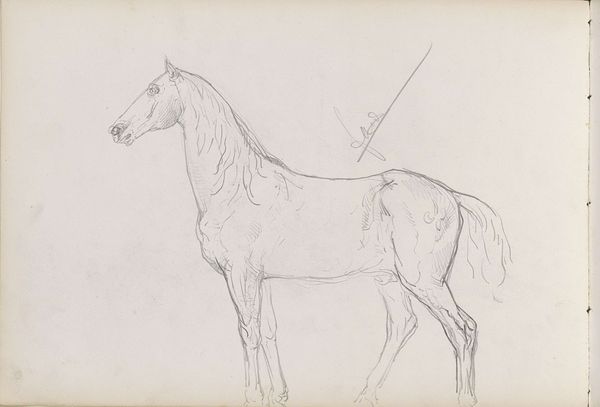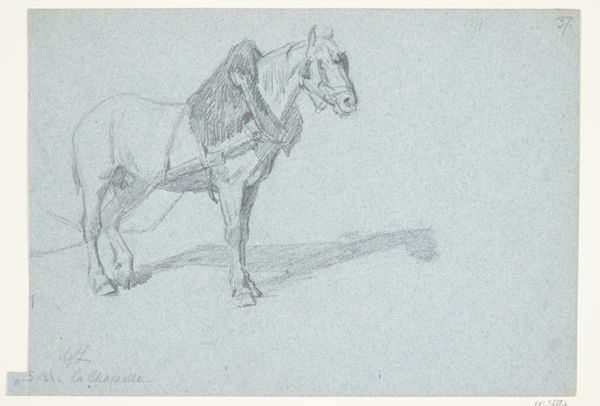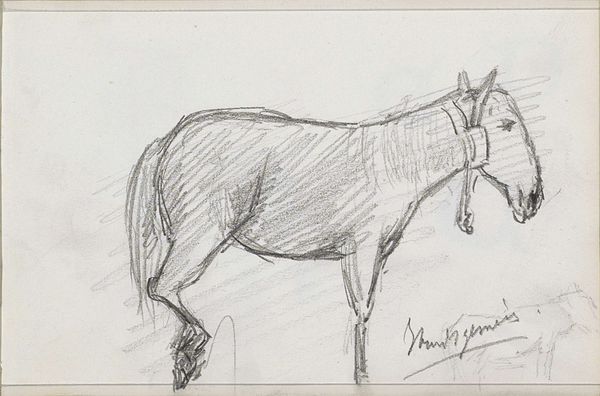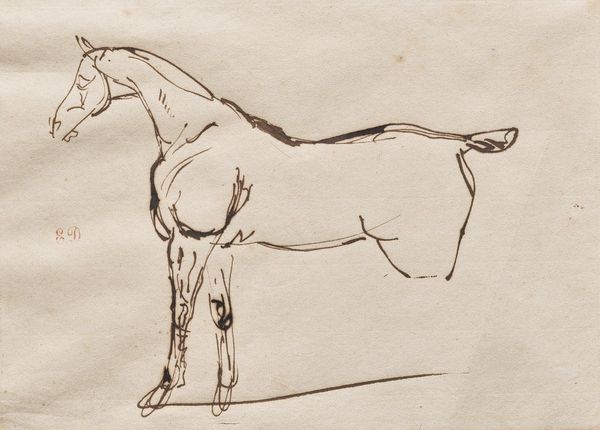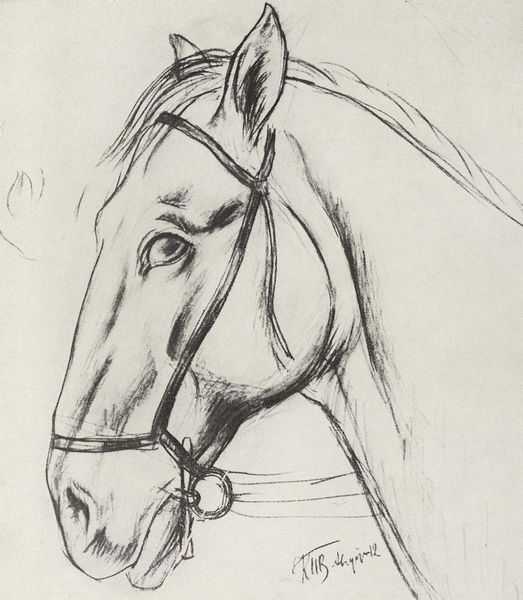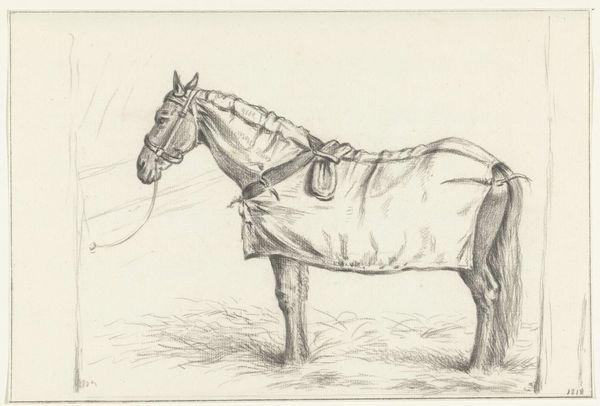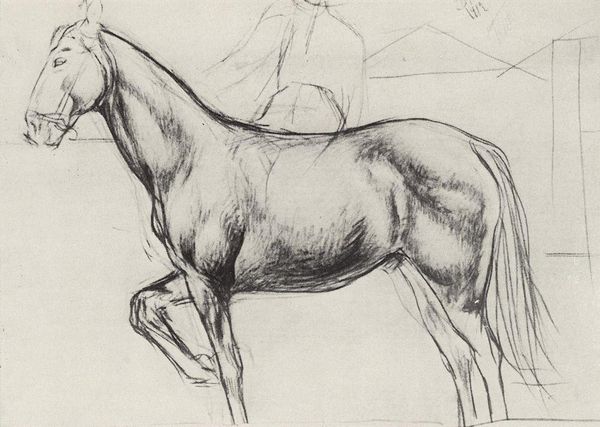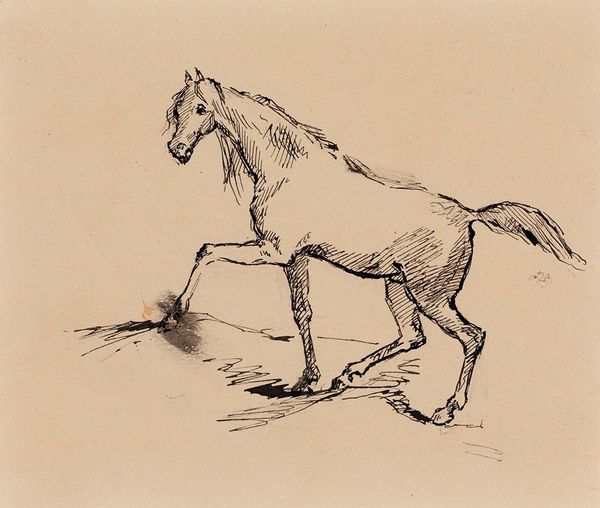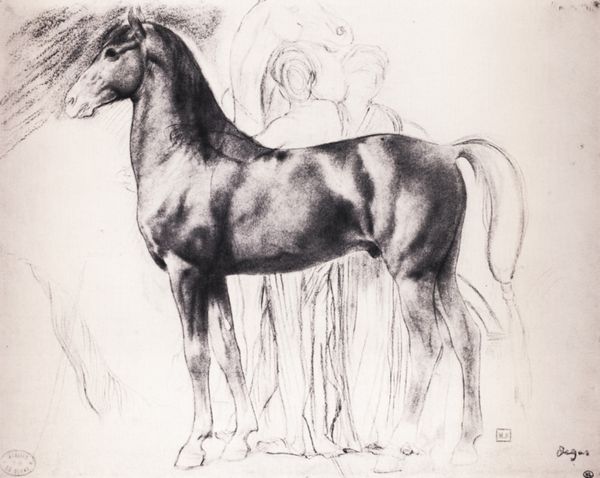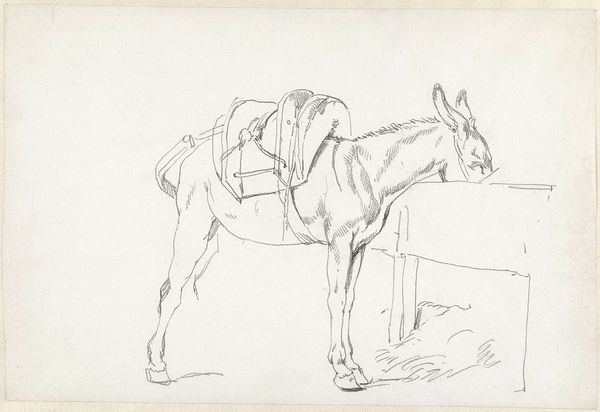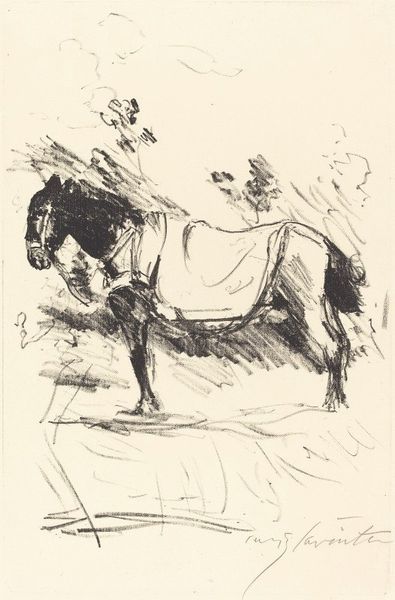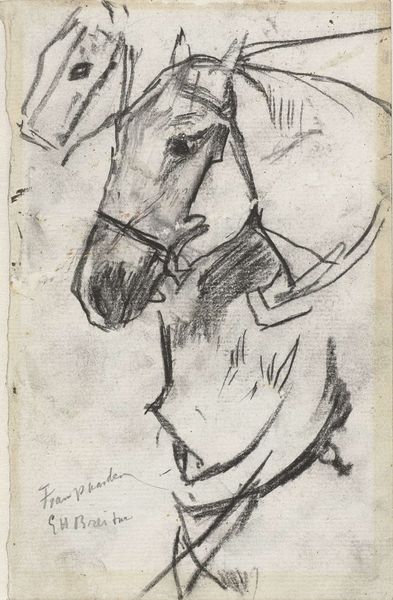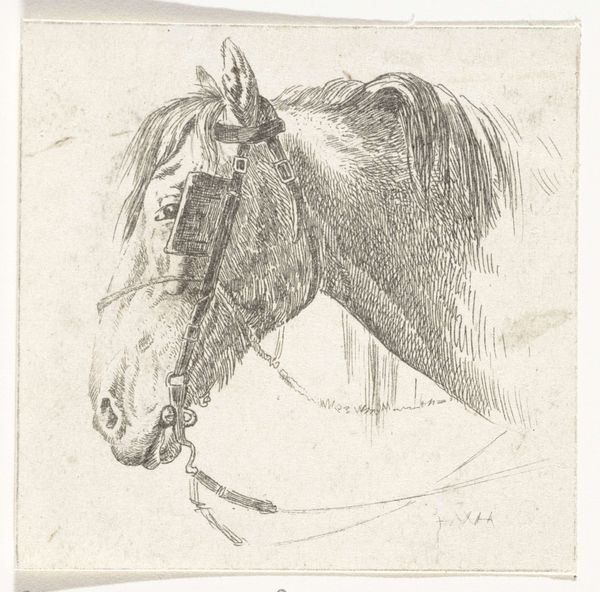
drawing, pencil
#
drawing
#
landscape
#
figuration
#
form
#
sketch
#
pencil
#
horse
#
men
Dimensions: 35 x 29 cm
Copyright: Public domain
Curator: Ferdinand Hodler created this pencil drawing, "Cavalryman striding a horse," in 1908. It is currently held in a private collection. Editor: There’s an amazing sense of raw energy here, isn’t there? It's the dynamic posture combined with those unfinished lines—almost vibrating with potential. Curator: Indeed. Hodler, during this period, was very invested in the Expressionist movement, specifically German Expressionism. And this piece really resonates with that historical trend towards simplification and emphasis on powerful gestures to convey emotive strength. Remember that military subjects were contentious, given widespread European conflict brewing in that era. Editor: Yes, the rudimentary forms of the horse practically jump off the page, don't they? You notice how much of the overall weight rests on what amounts to a few strategically placed lines suggesting muscles and joints. He masterfully used an economy of means to portray force. Curator: This focus could stem from a societal preoccupation during times of heightened geopolitical unrest. By portraying soldiers or military scenes in a stark manner, artists encouraged the population to evaluate war’s impact. Consider it within a larger history of conflict representation— contrasting with heroic battle depictions in the prior century. Editor: Absolutely. The horse is a powerful figure and it definitely plays to his conceptual exploration. You can see in the tension of each drawn contour, the energy, but what I notice too is the simplification of natural forms in terms of an ideal model. What could a man be in such an ideal form? Curator: That consideration aligns closely with Hodler's involvement with Symbolism—an attempt to transcend merely factual rendering by means of suggestive figuration. Editor: Looking again at how Hodler manages to extract so much expressive capacity from so little technical artifice, it’s remarkable, indeed. Curator: By looking closer, we recognize the historical backdrop behind simplified but bold depictions like these that helped express dissent against a specific historical reality. Editor: And it reminds us that beauty resides in form, as well as in a wider setting of social considerations.
Comments
No comments
Be the first to comment and join the conversation on the ultimate creative platform.

